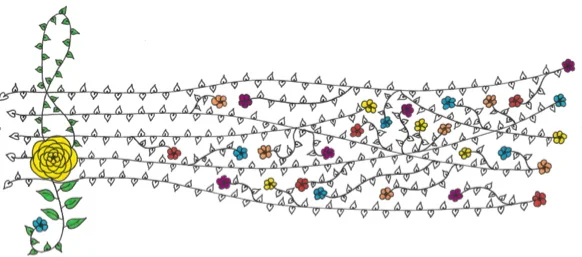One of the things I learned at Yasodhara Ashram was that I have the power to create and destroy worlds! Sometimes, though, it felt that I was not so much creating my world as having it trail after me in the manner of Pigpen’s cloud. While I was sitting in Satsang at the ashram, singing or playing the harmonium, a few of the bhajans clicked into places that were already established in my mind. From the first time I encountered I Have Nothing to Offer Thee, it was simply impossible not to hear it as a gigue.
A gigue was one of the most common types of Baroque dances. A lively dance, the gigue is related to the English folkdance the jig. Gigues were often also included in music that was not intended for actual dancing. For example, they typically provide a lively ending to a keyboard suite.
The movements of a suite have sections that are repeated. In the Baroque period, it was common practice for performers to add ornaments or improvise small variations when repeating a section. In this bhajan arrangement, I wrote out an ornamented repeat. Initially this was a discipline, a way to help me keep up the ornamentation through the entire repeat. All too often I start off a repeat with a flurry of trills and then default to the unadorned notated version when my hands get tired or my concentration wavers. I decided to include the written-out repeat in the typeset version in order to share it with players who may be similarly distractible or who might not be accustomed to adding their own ornamentation.

